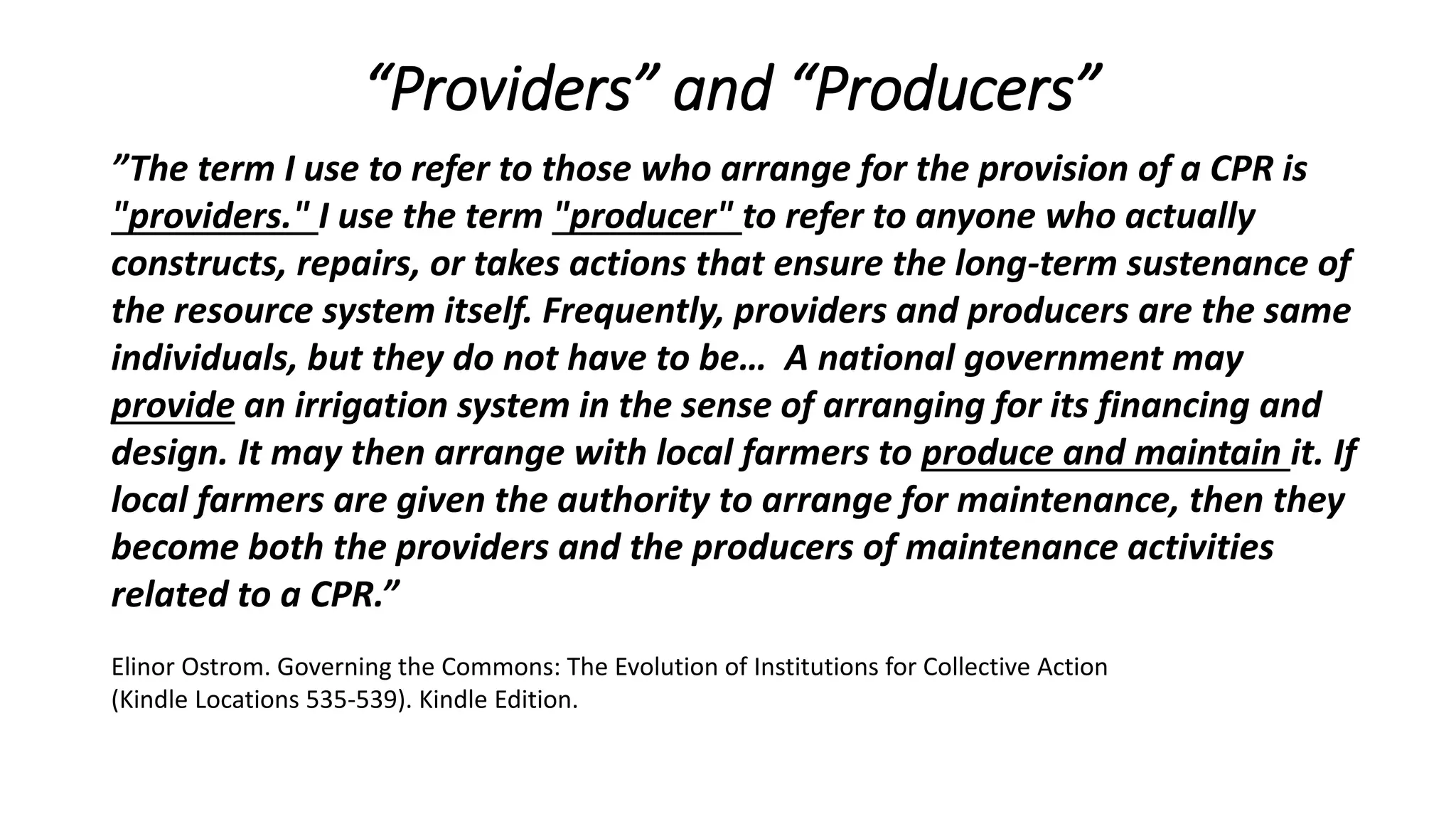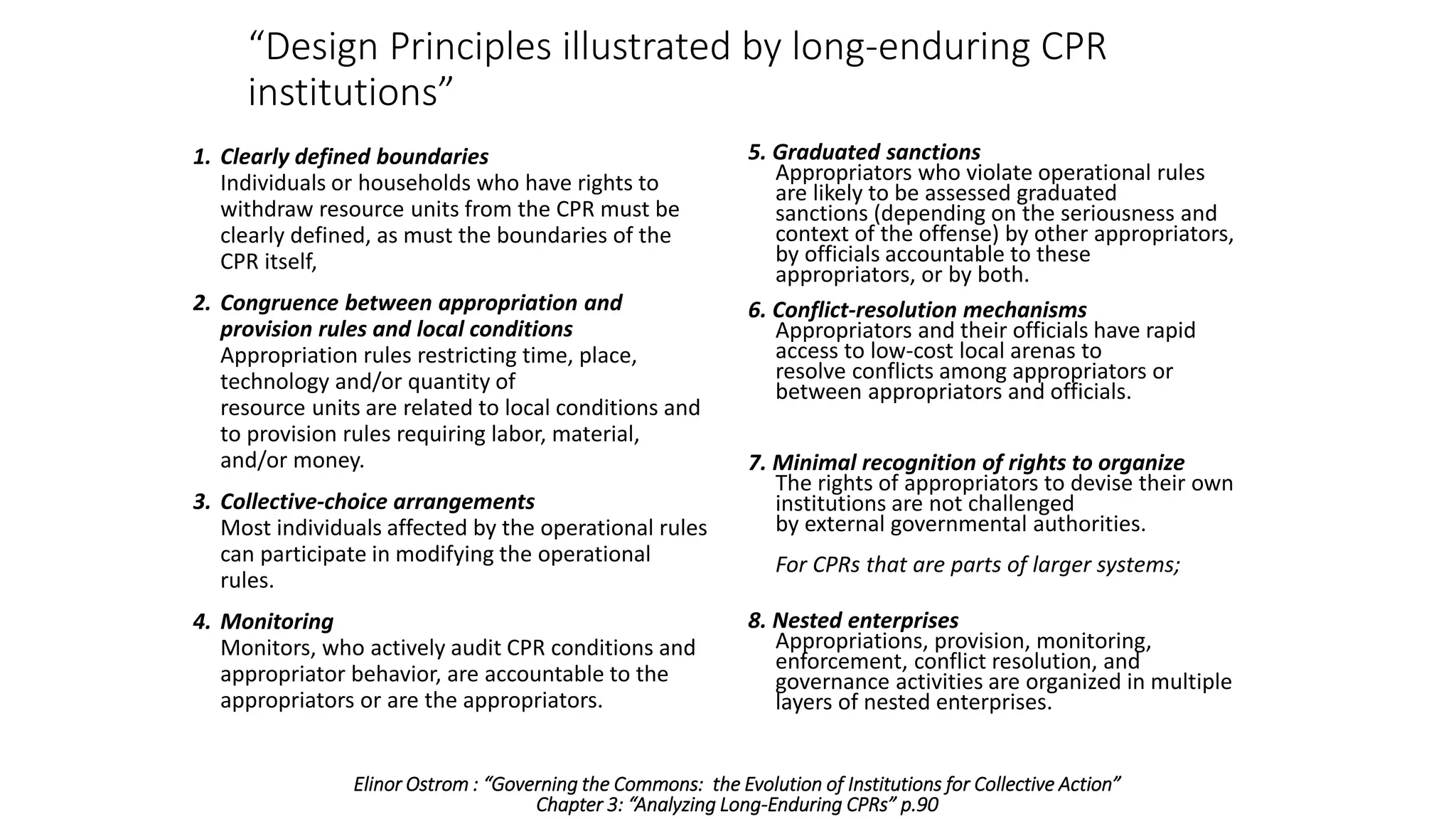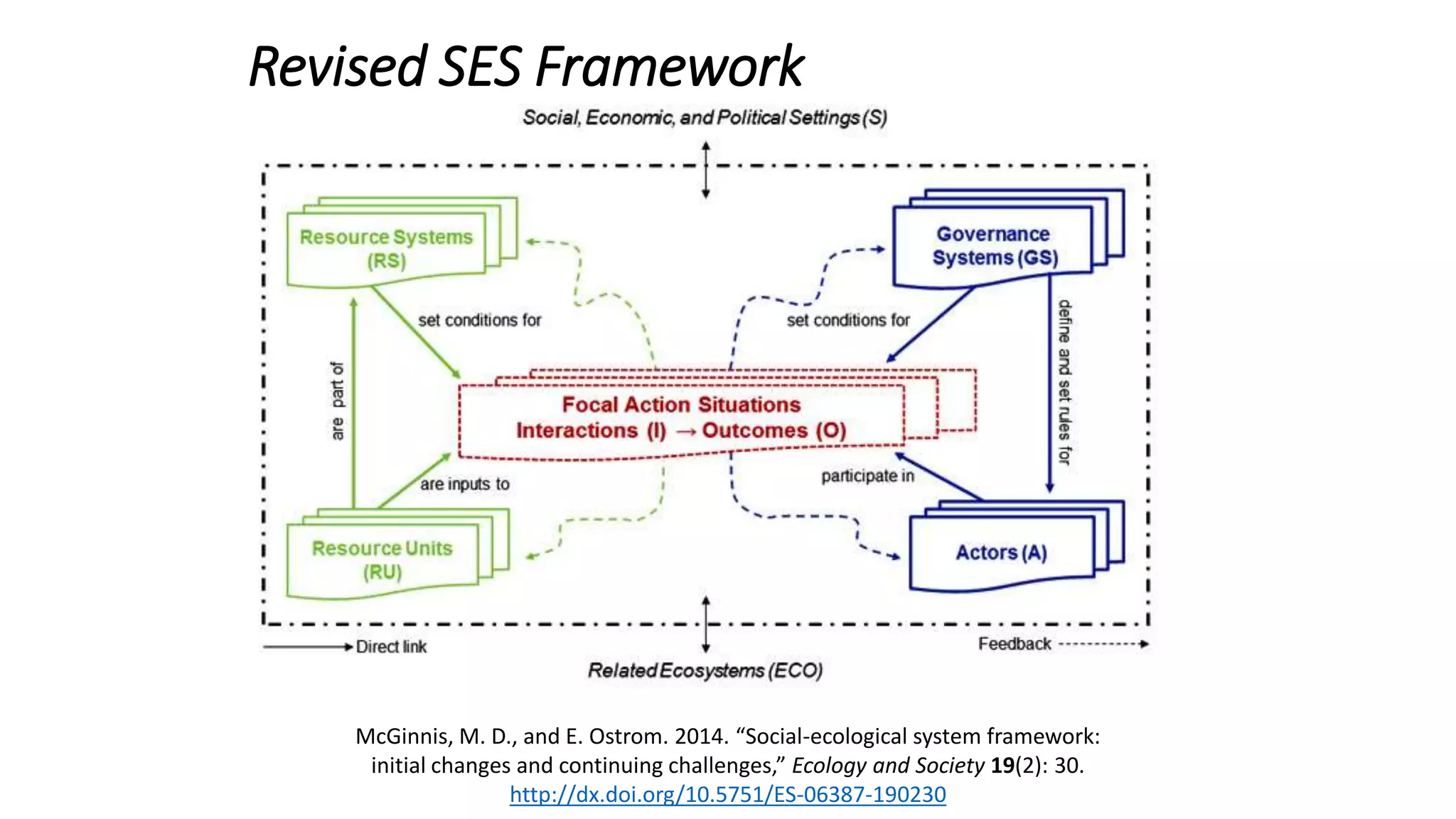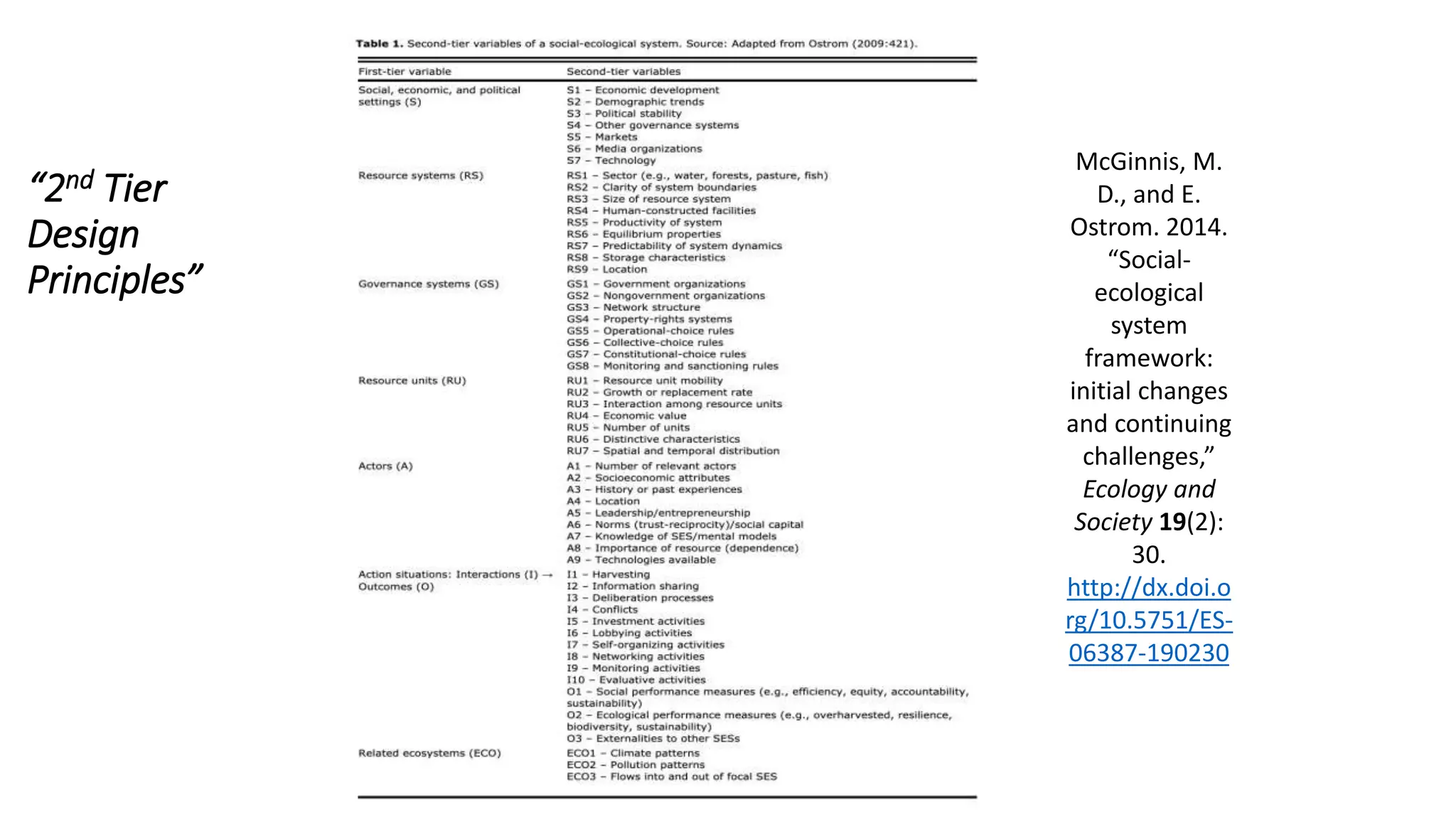The document discusses various aspects of 'the commons', emphasizing its significance in environmental leadership and human heritage. It explores concepts of property rights and land tenure, addressing how these have been shaped through historical processes like enclosure, especially in the context of England and the experiences of Indigenous peoples in New England. Additionally, it highlights the 'tragedy of the commons', illustrating how individual rational decisions can lead to the depletion of shared resources, thereby providing a critical perspective on resource management.

![What is “the commons”?
“Ultimately there is but one ‘commons,’ it includes nature
as it existed before fences and walls, borders and laws,
the high seas, the skies, the air we breathe – and its
remnants are now found within the world’s more than
120,000 protected areas (about 10 per cent of the earth’s
terrestrial surface) and in the wild populations of plants
and animals that still survive – and it includes millions of
years of naturally selected genetic experience carried by
each human being and by our fellow organisms.
“[But] …‘the commons’ also includes our human heritage of
knowledge and wisdom gained through thousands of year
of learned experience by human cultures and gained
through hundreds of years of the more or less methodical
culture of science.
– TD Moritz “Conservation Partnerships in the Commons? Sharing data and
information, experience and knowledge, as the essence of partnerships,”
http://www.eco-index.org/search/pdfs/moritz_english.pdf](https://image.slidesharecdn.com/thecommons-201203200647/75/The-commons-2-2048.jpg)
![“Property Rights”
“Property and Ownership”
[First published Mon Sep 6, 2004; substantive revision Sat Mar 21, 2020]
“Property is a general term for rules governing access to and control of land and other
material resources…
“Because these rules are disputed, both in regard to their general shape and in regard to
their particular application, there are interesting philosophical issues about the justification
of property. Modern philosophical discussions focus mostly on the issue of the
justification of private property rights (as opposed to common or collective property).
“ ‘Private property’ refers to a kind of system that allocates particular objects like pieces
of land to particular individuals to use and manage as they please, to the exclusion of
others (even others who have a greater need for the resources) and to the exclusion also
of any detailed control by society. Though these exclusions make the idea of private
property seem problematic, philosophers have often argued that it is necessary for the
ethical development of the individual, or for the creation of a social environment in which
people can prosper as free and responsible agents.”
https://plato.stanford.edu/entries/property/](https://image.slidesharecdn.com/thecommons-201203200647/75/The-commons-3-2048.jpg)

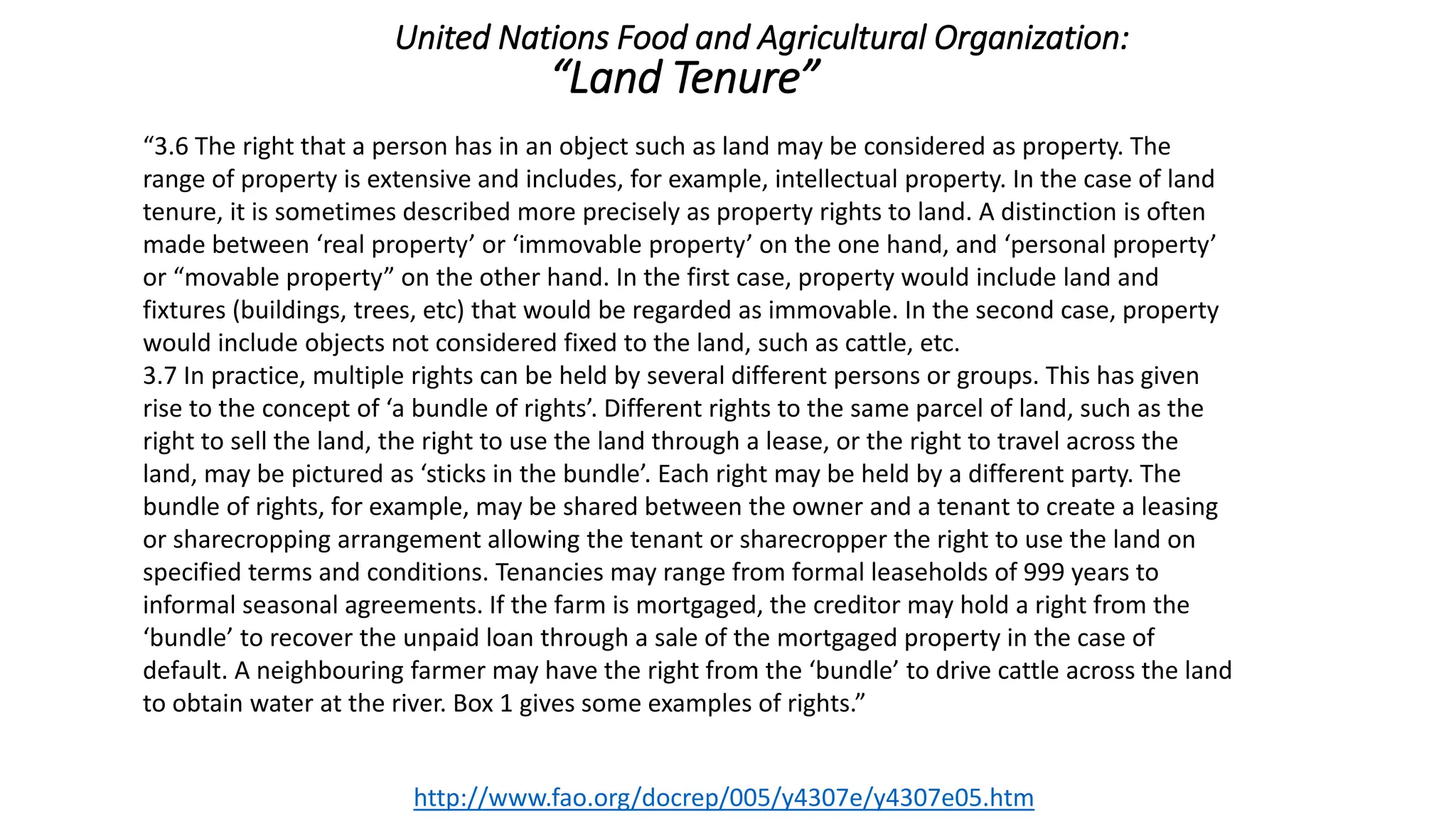

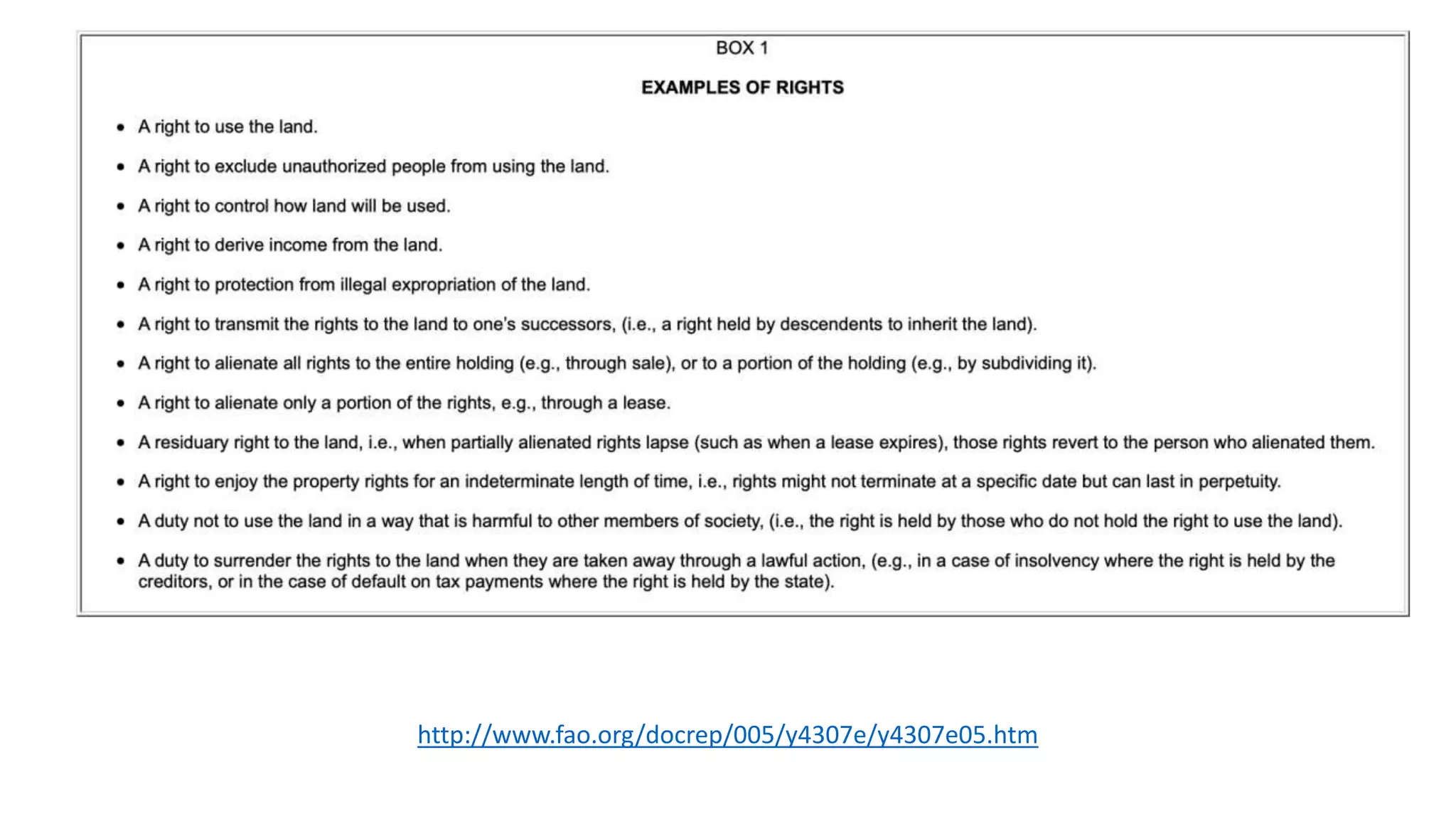

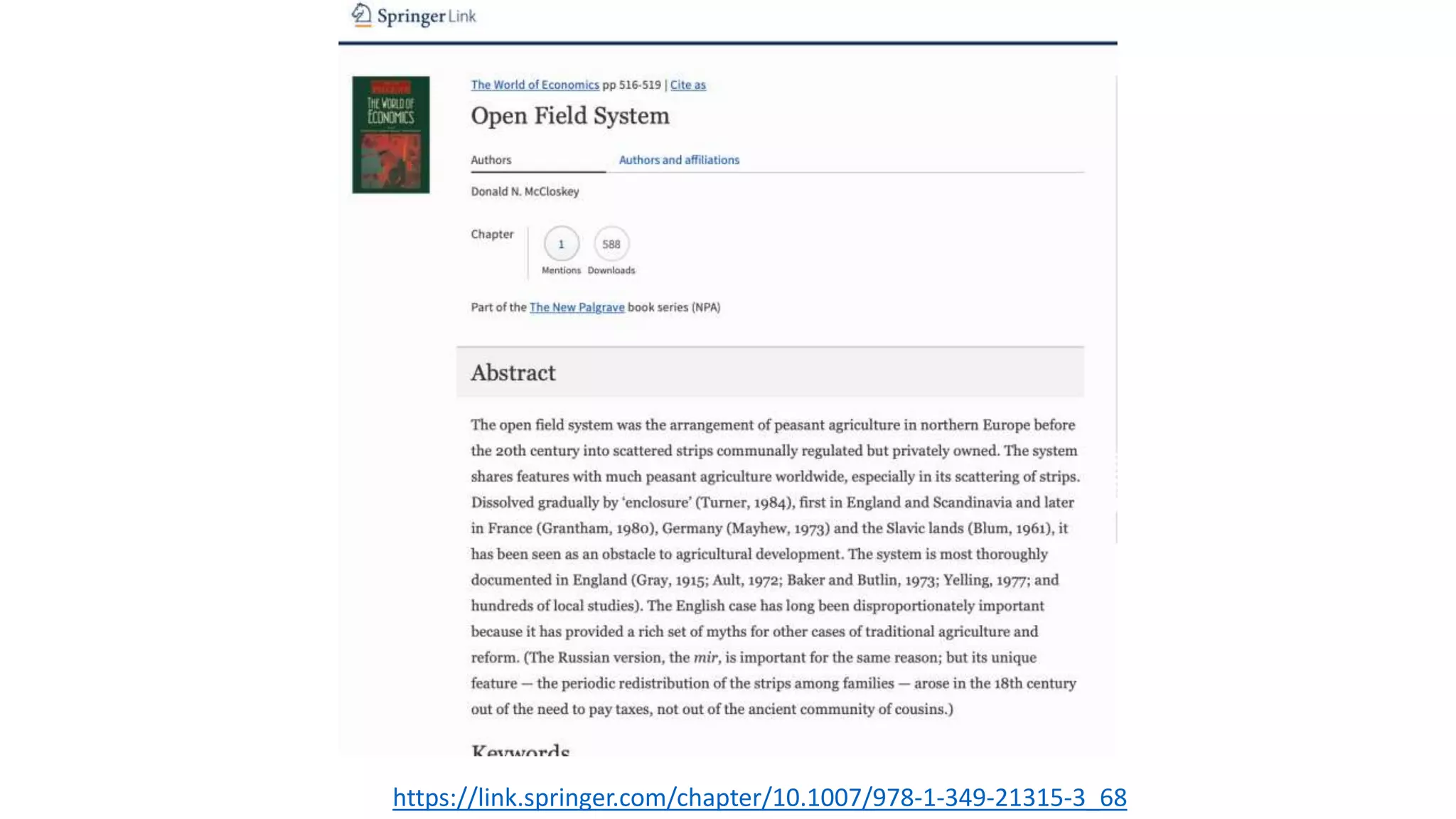



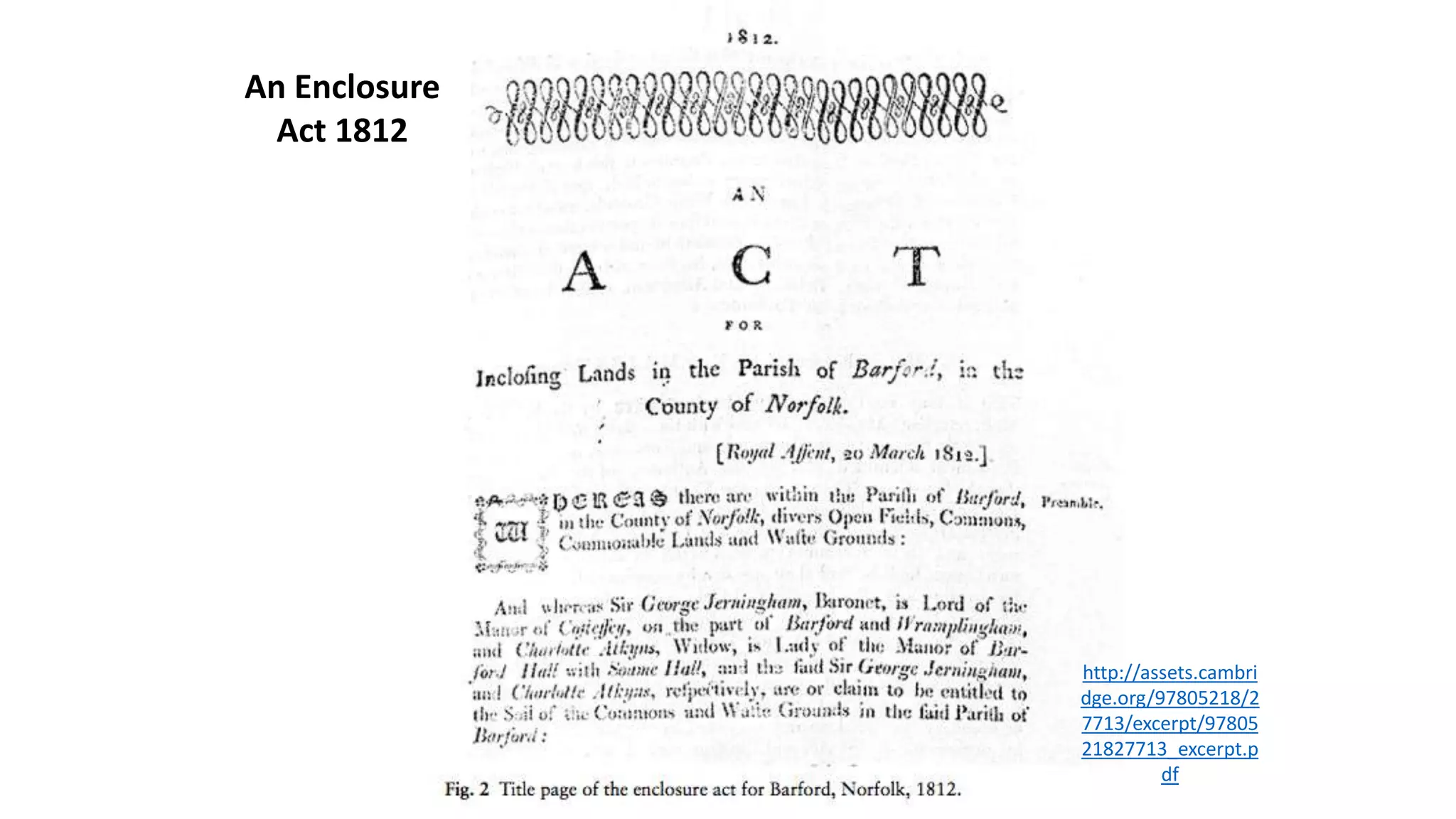

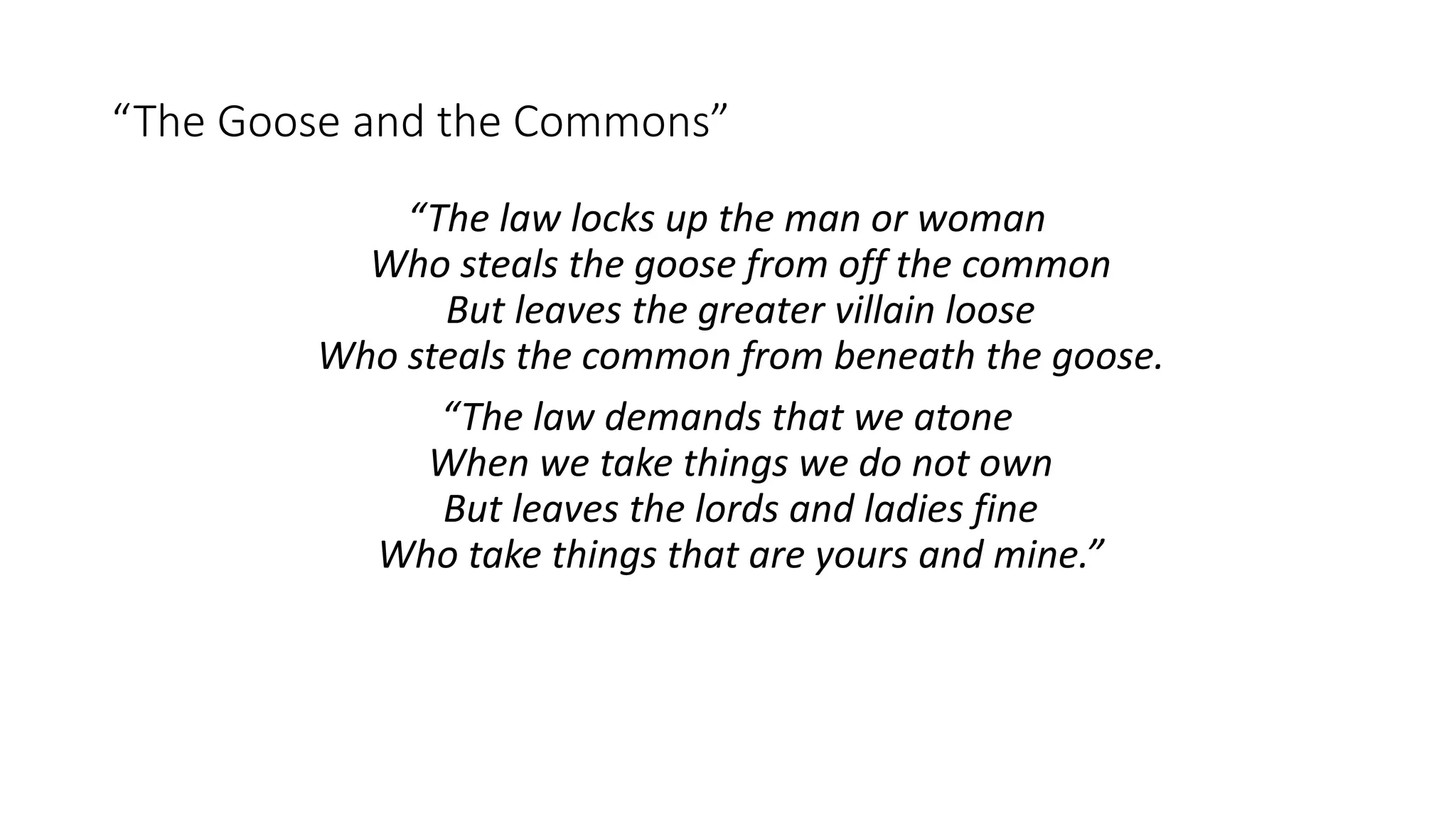

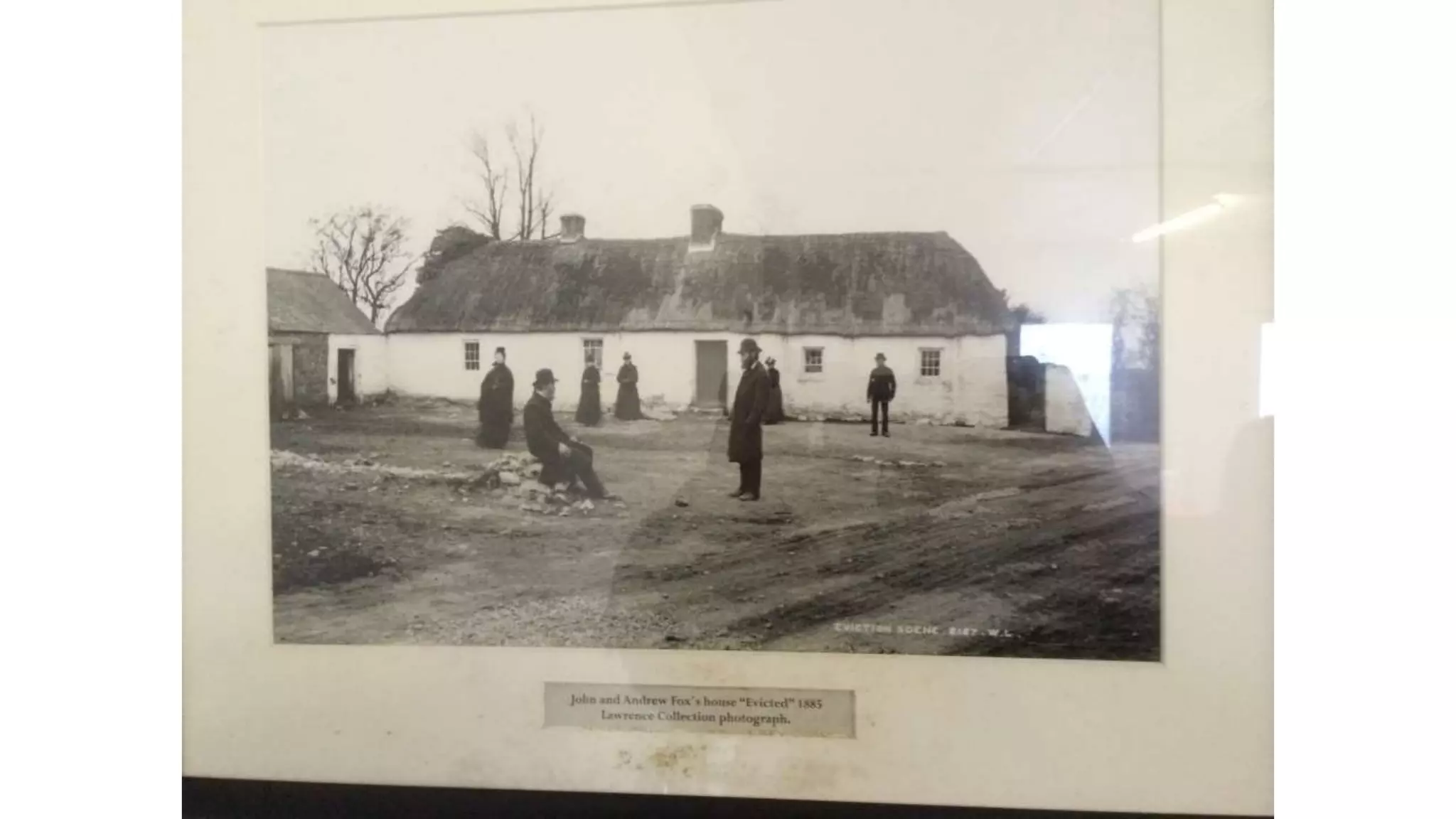
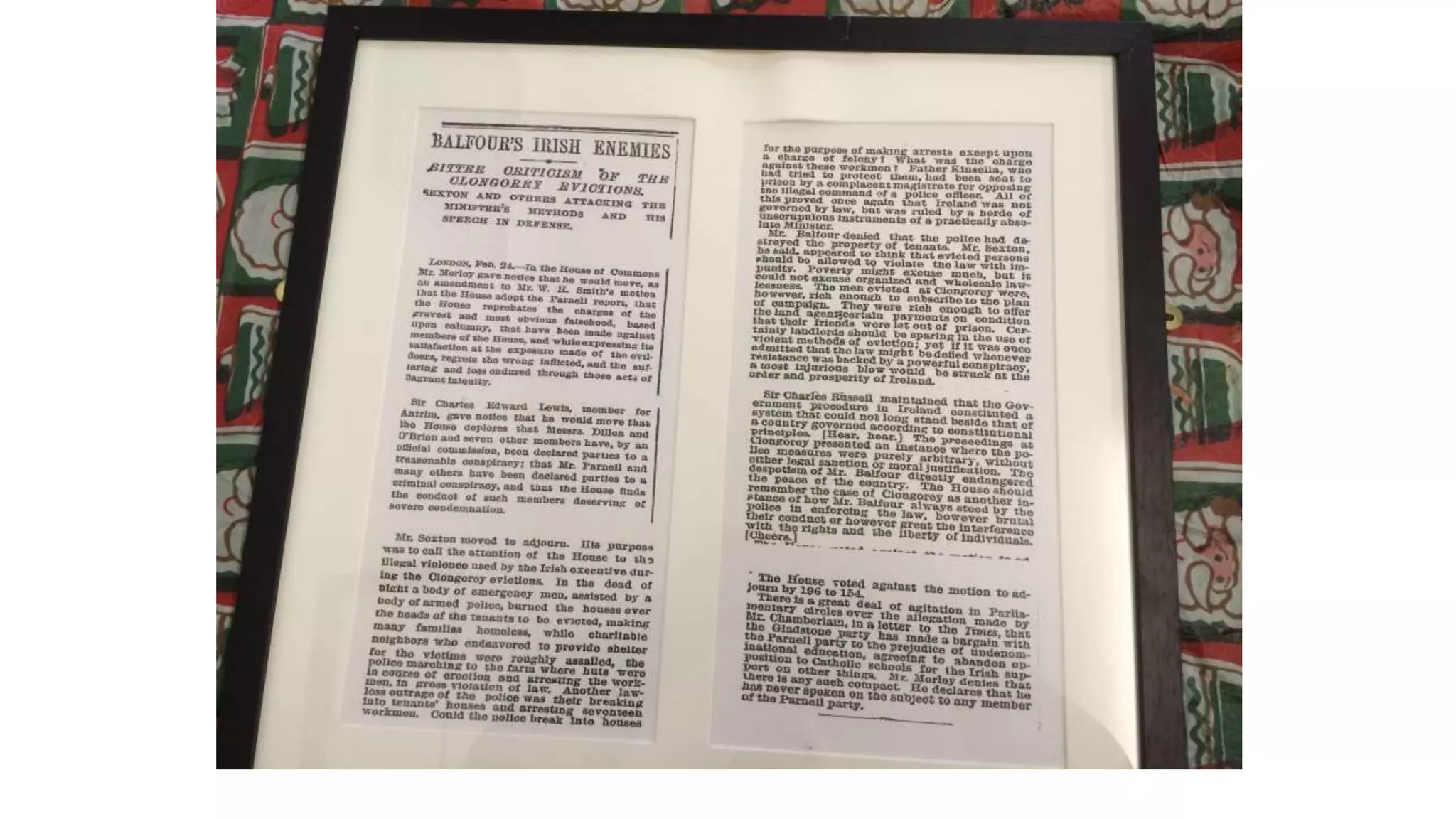



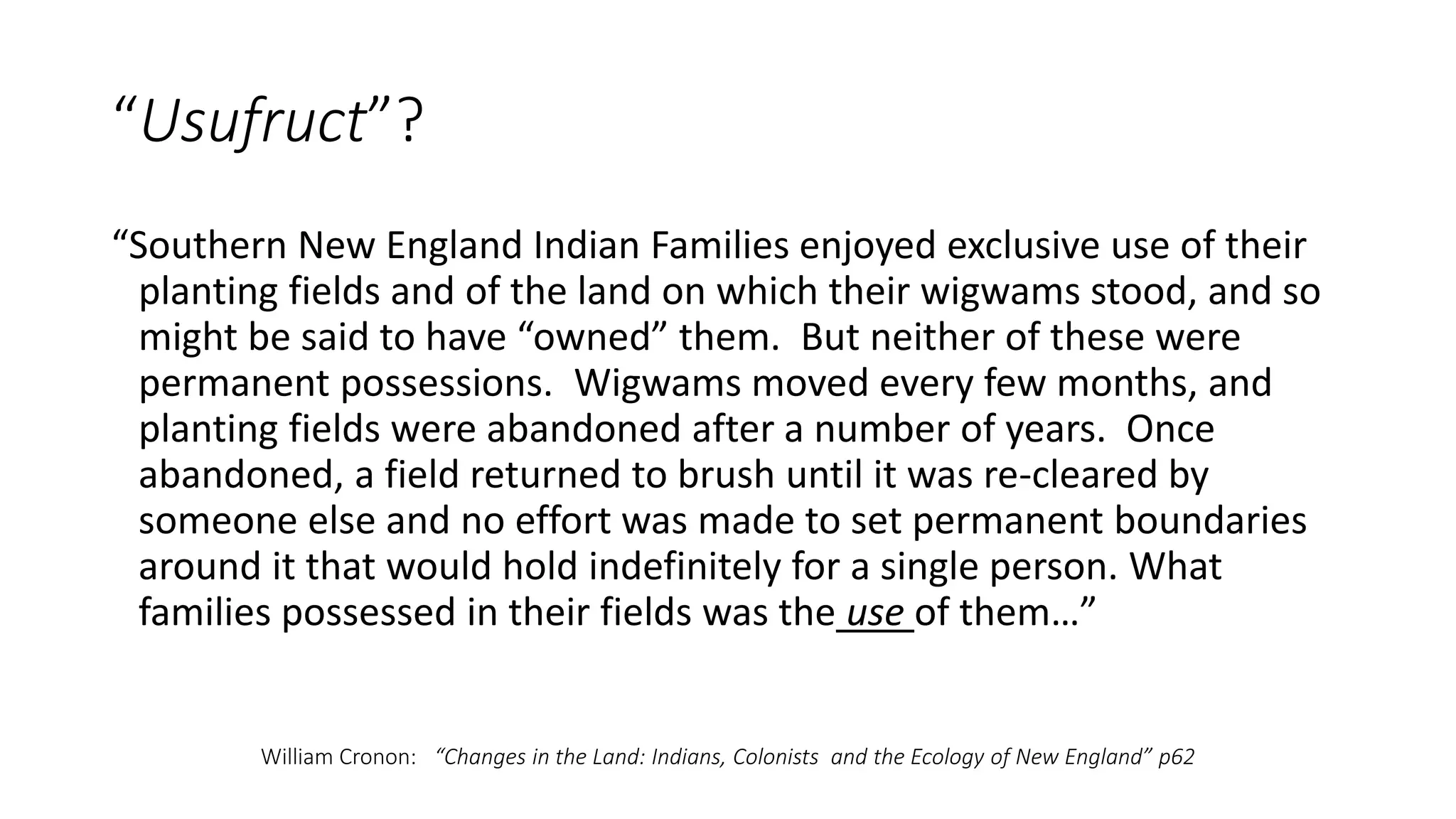





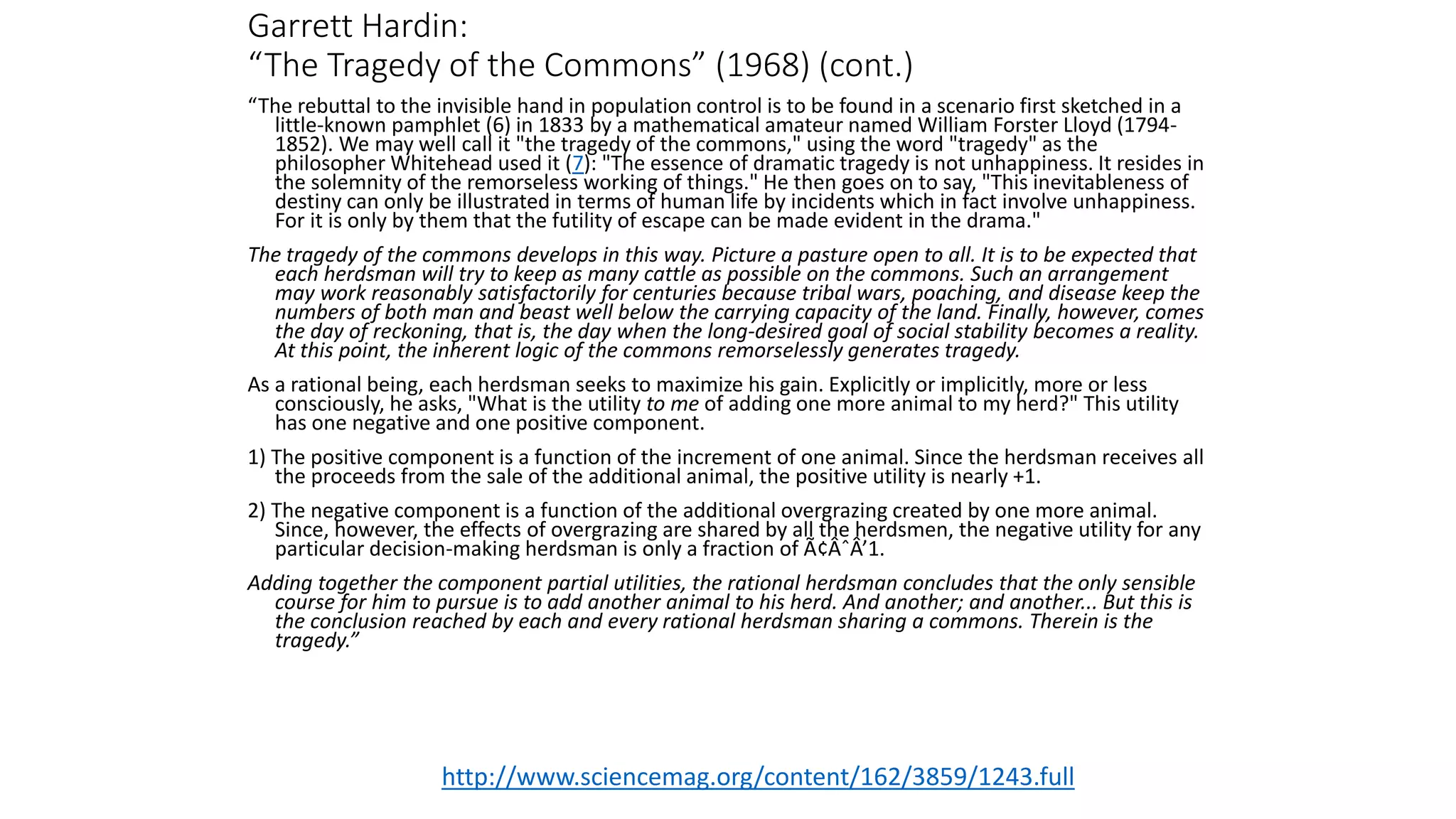
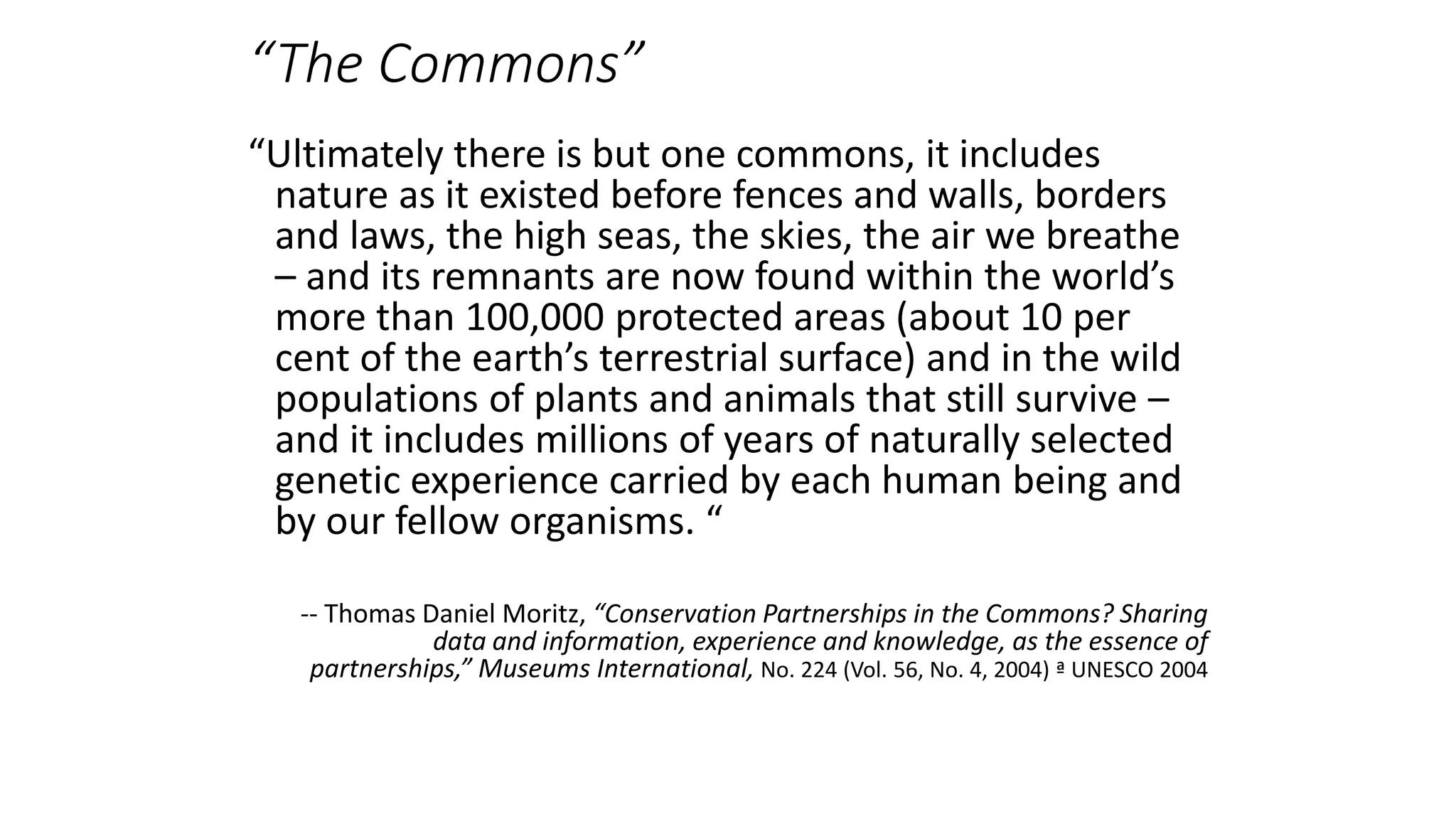
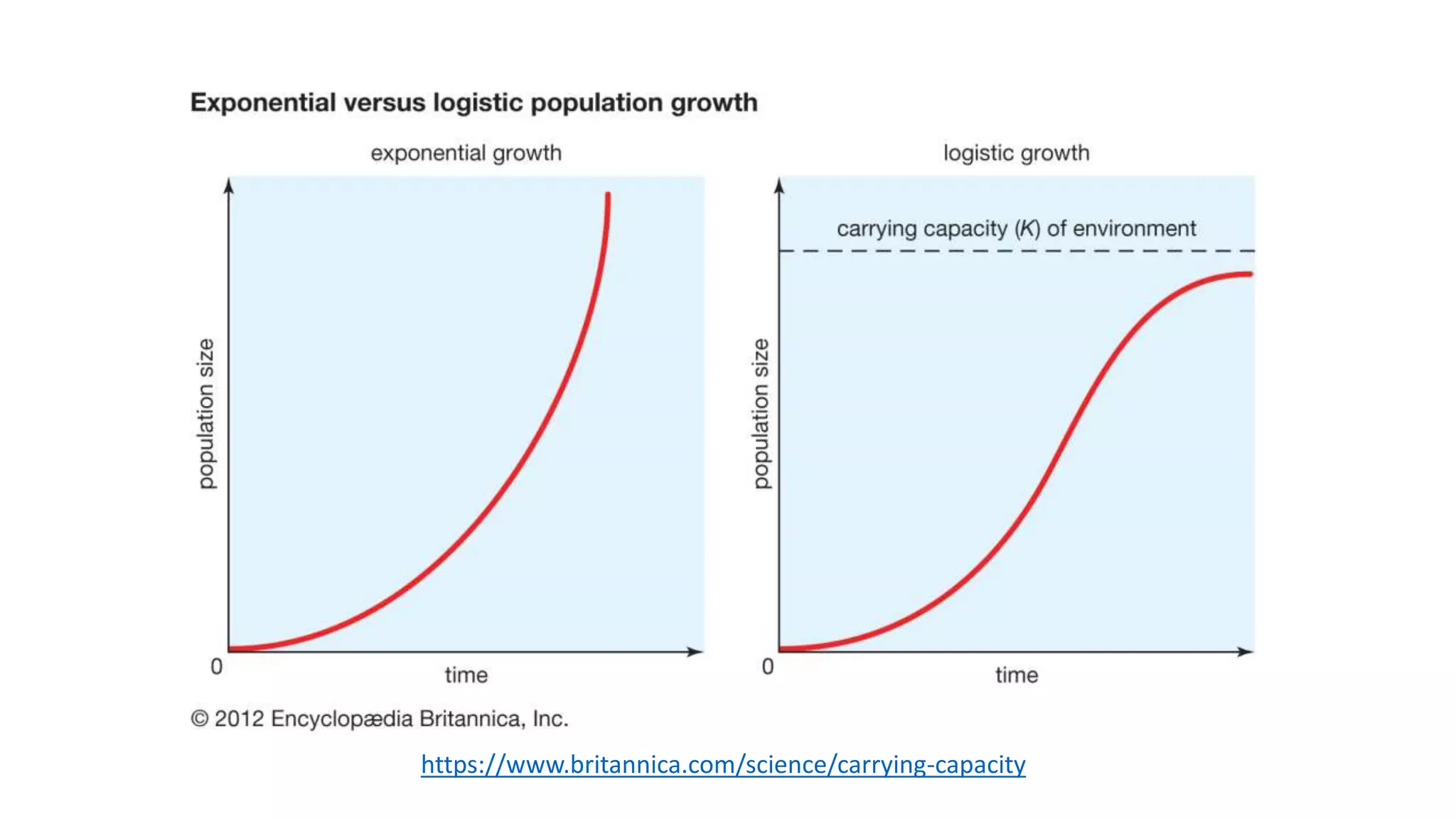


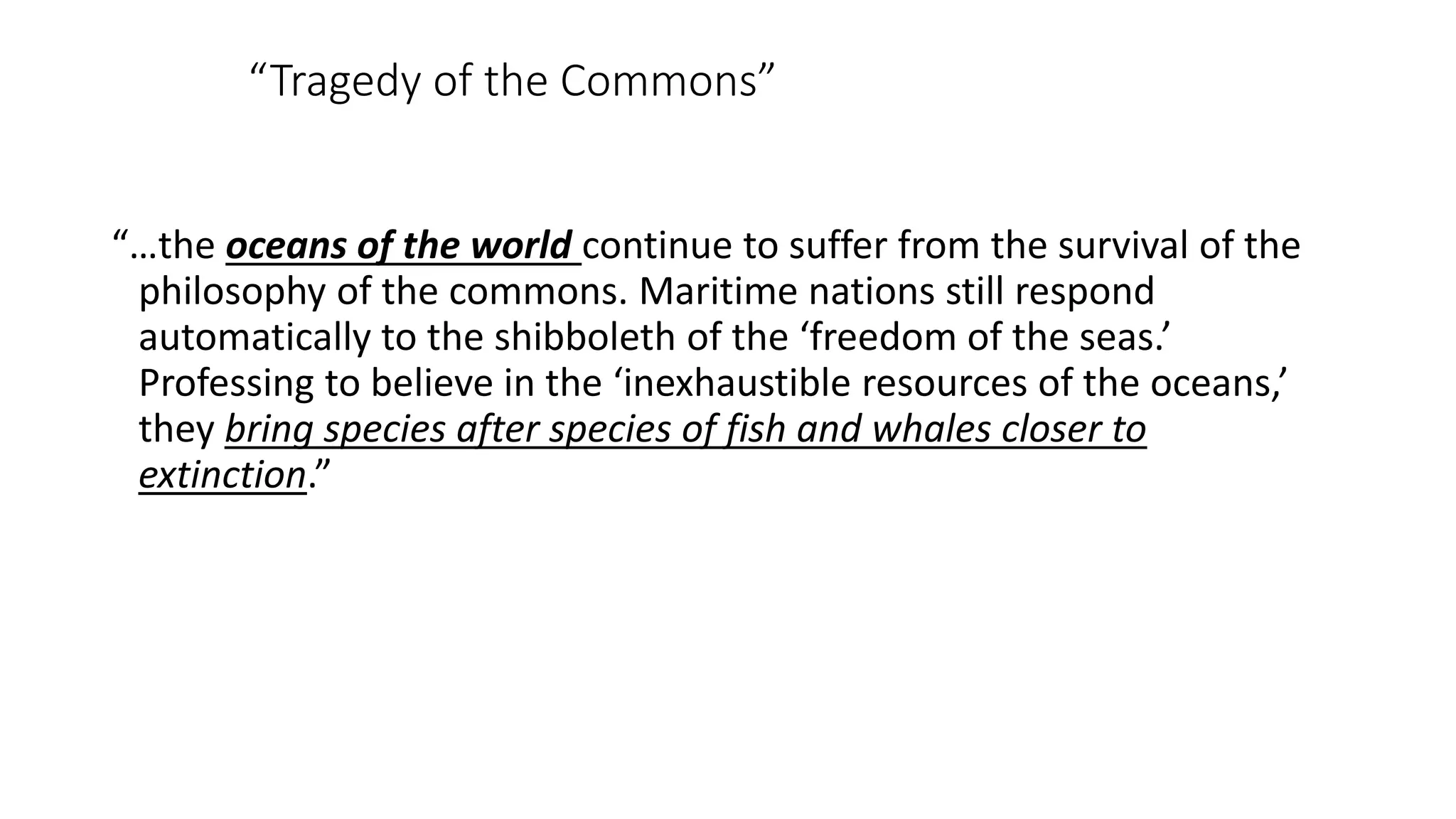

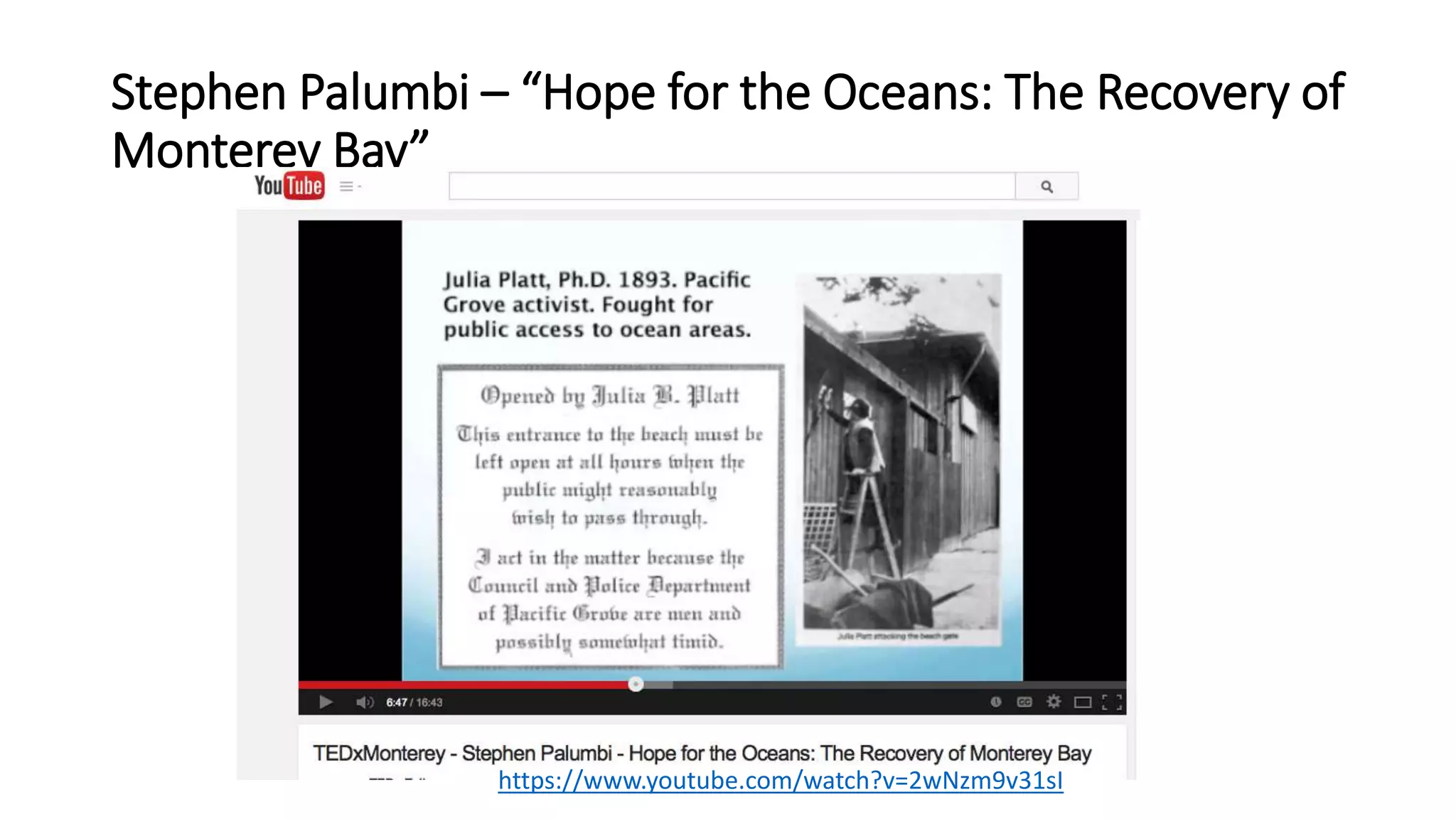
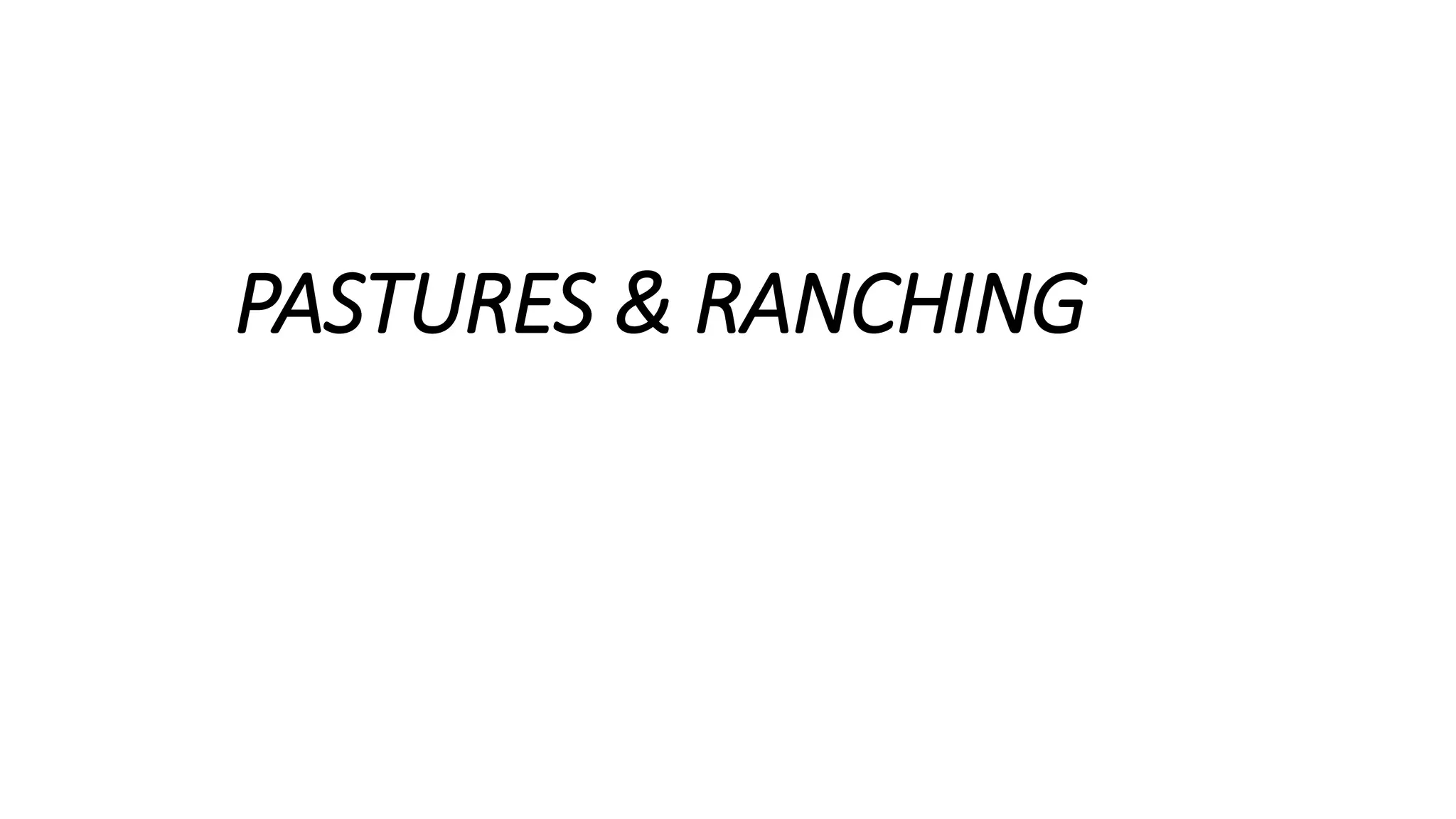





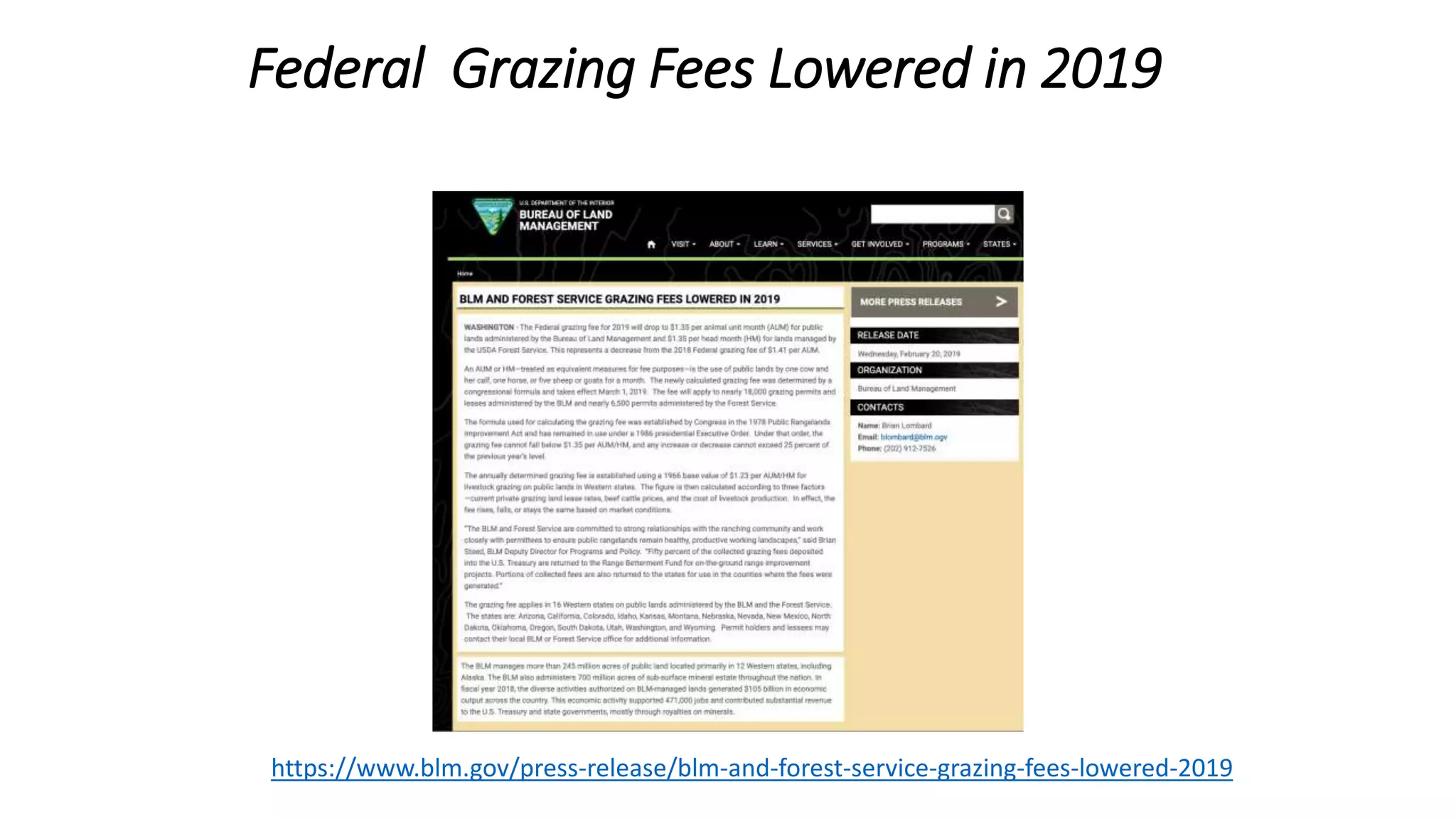
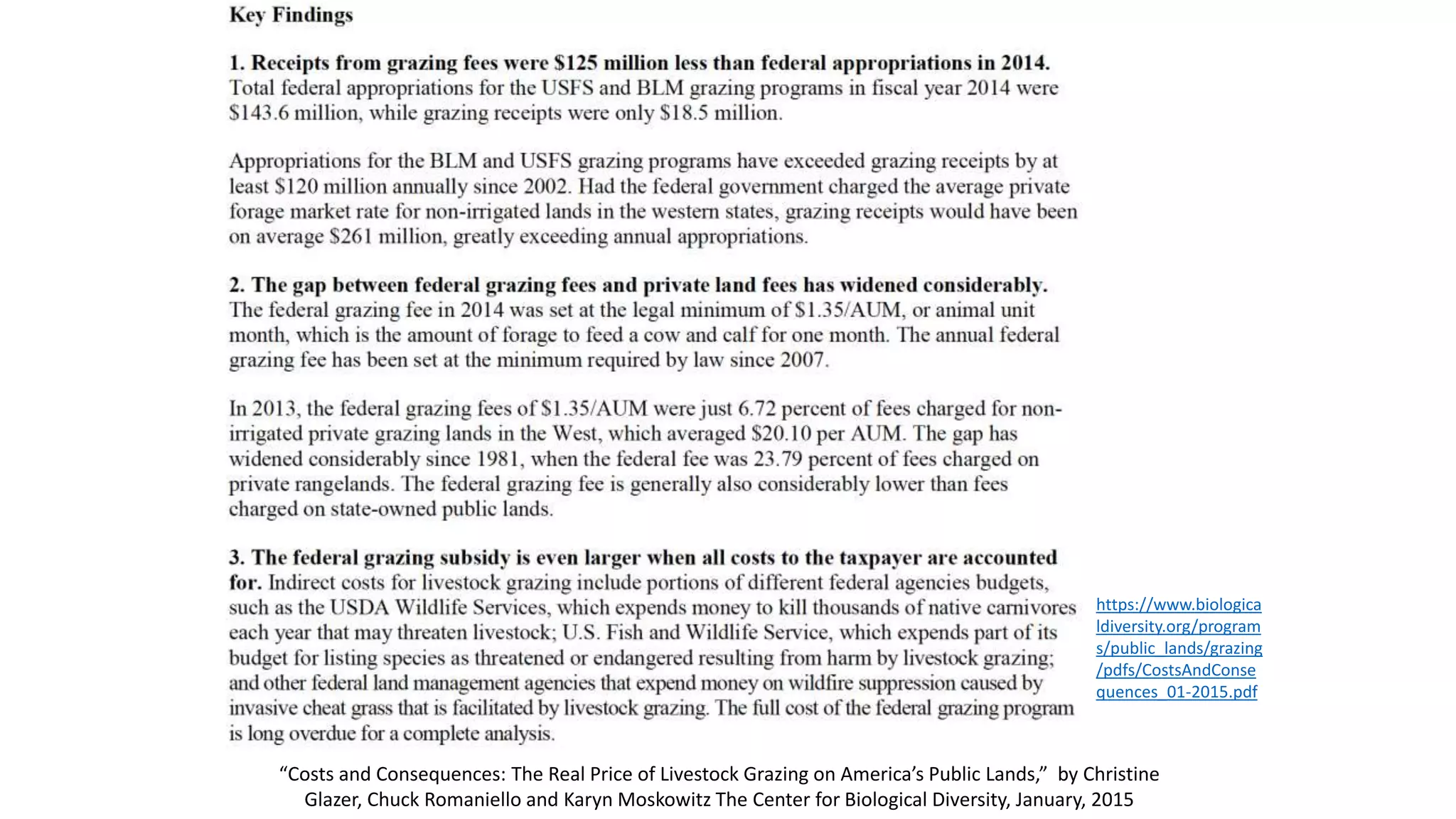
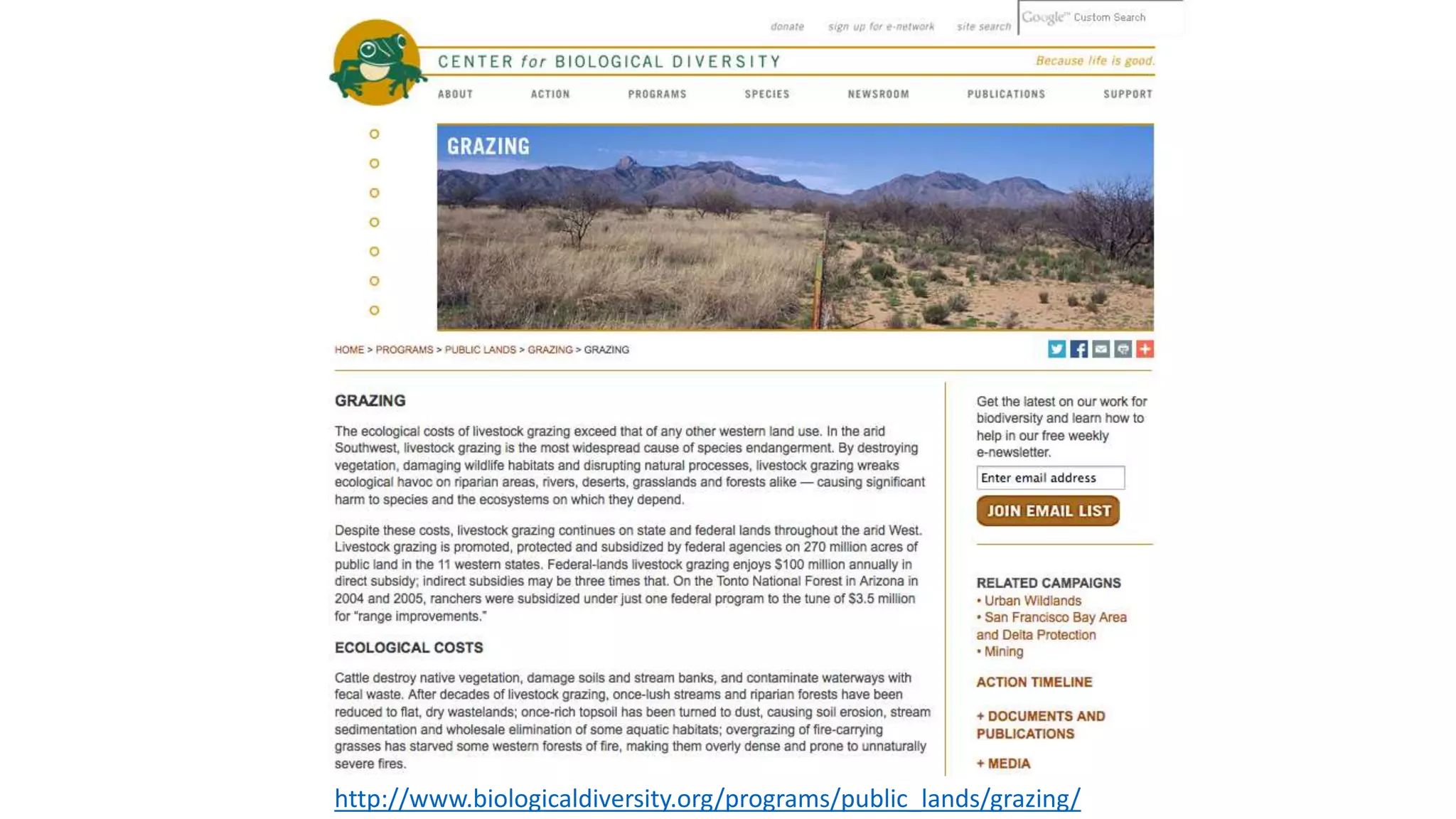

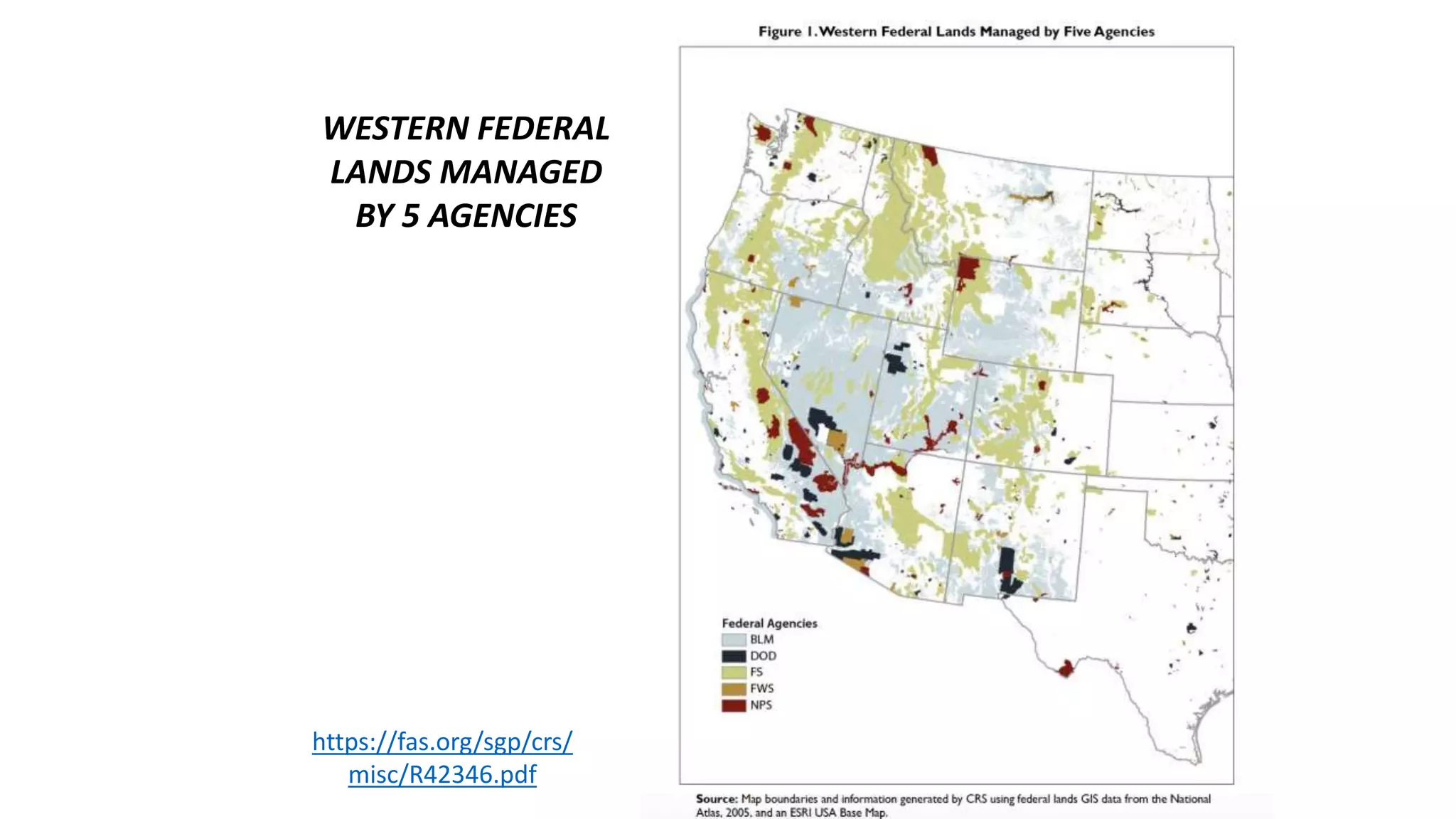






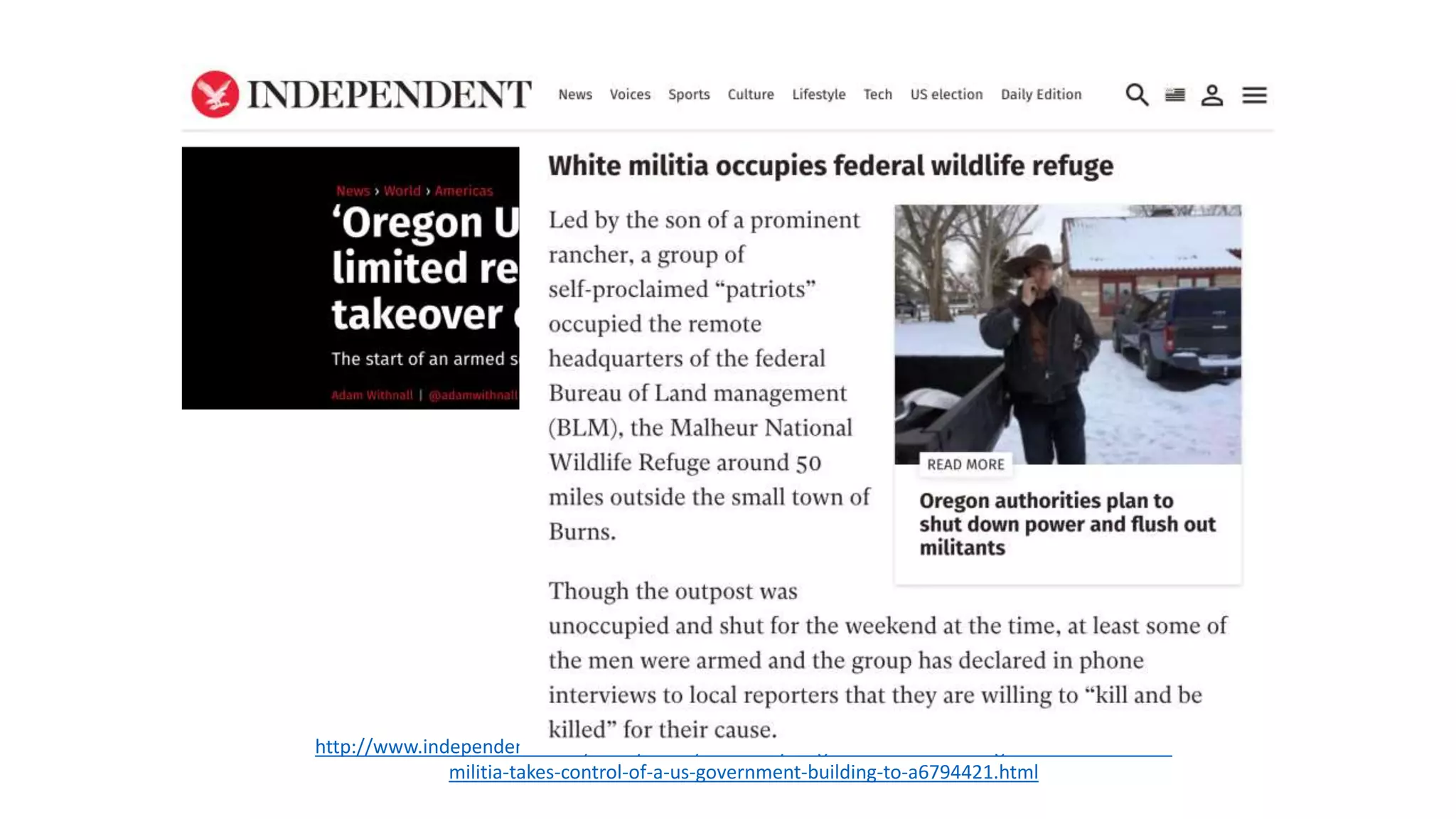
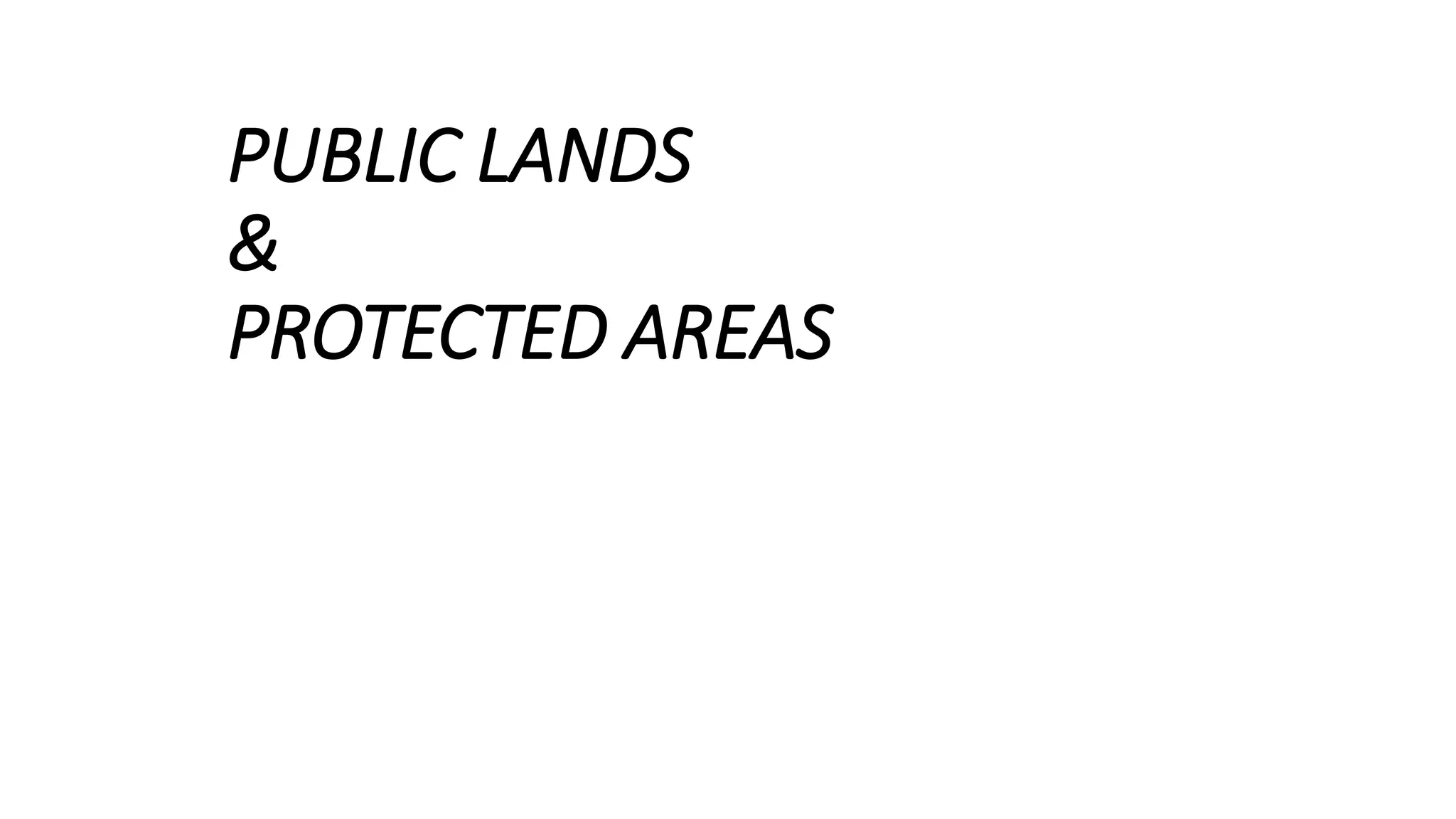
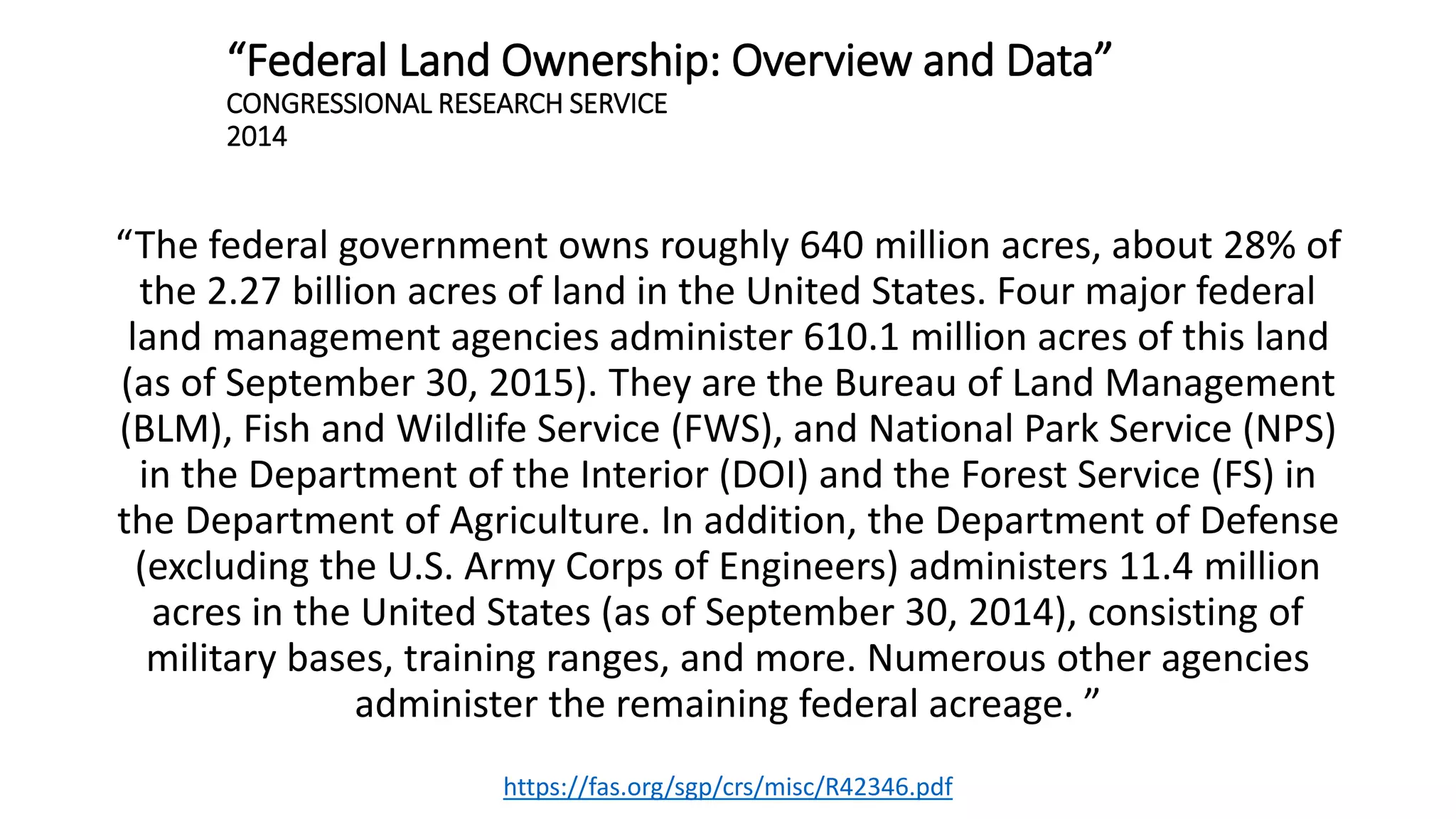
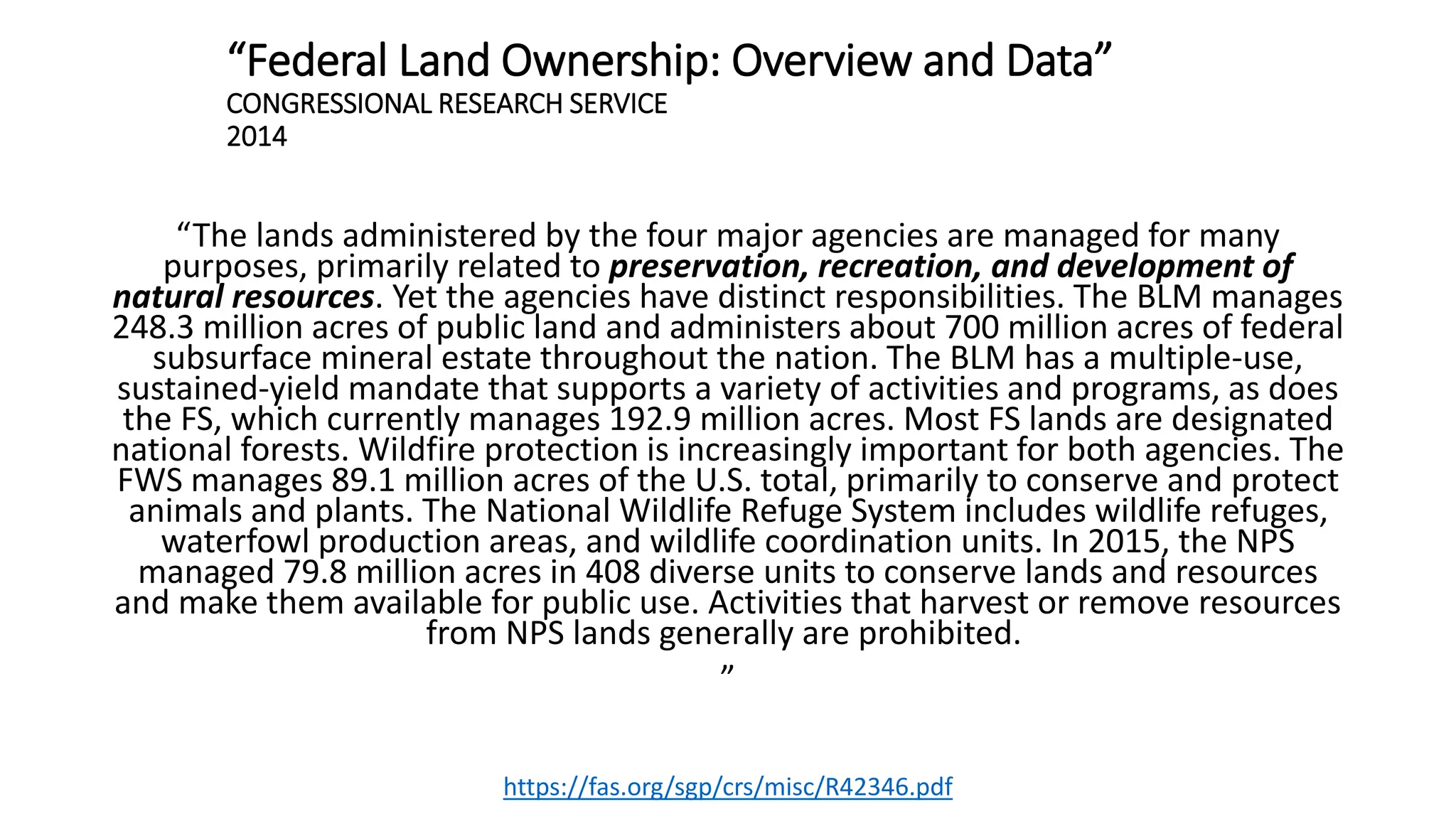
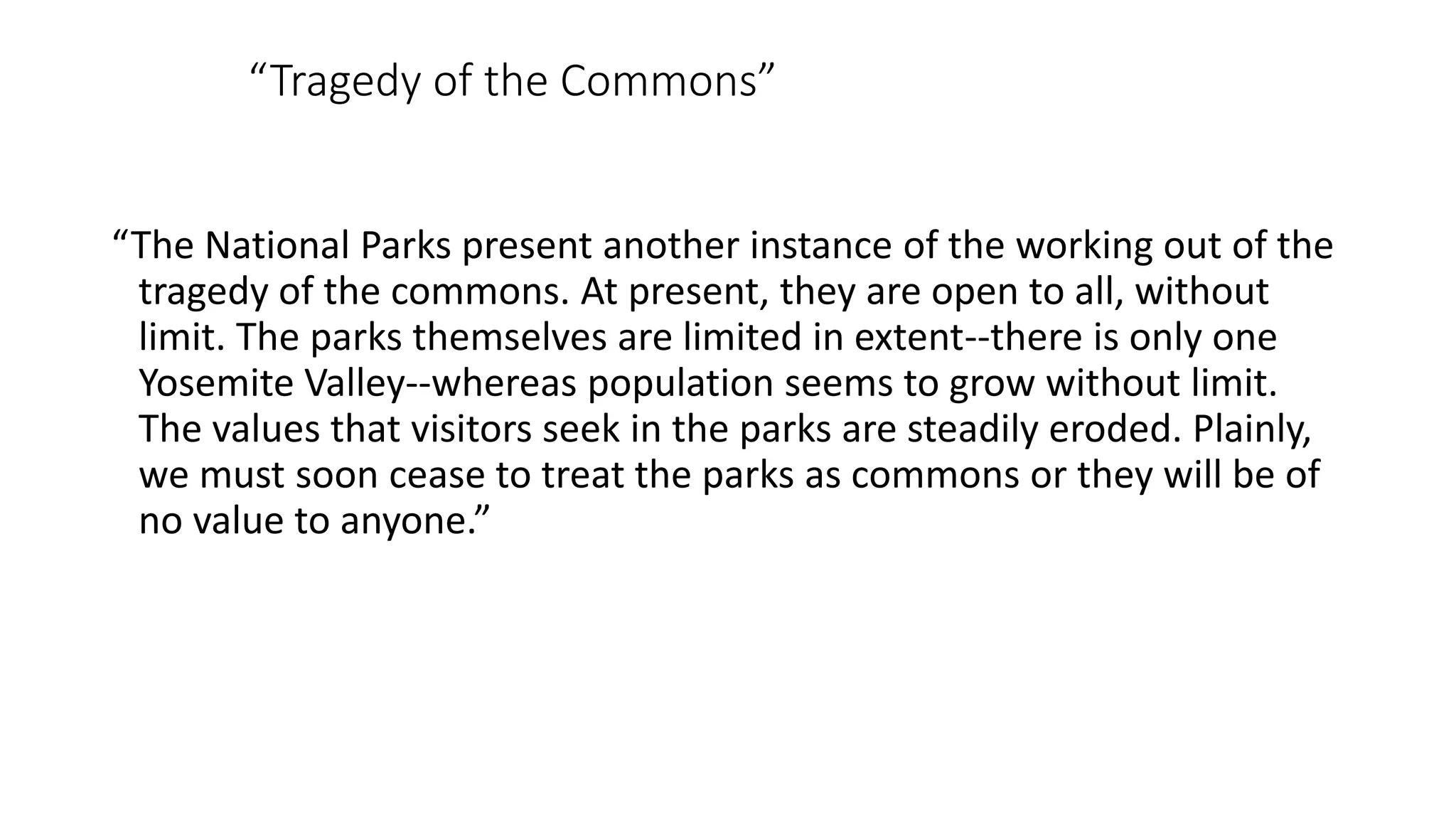

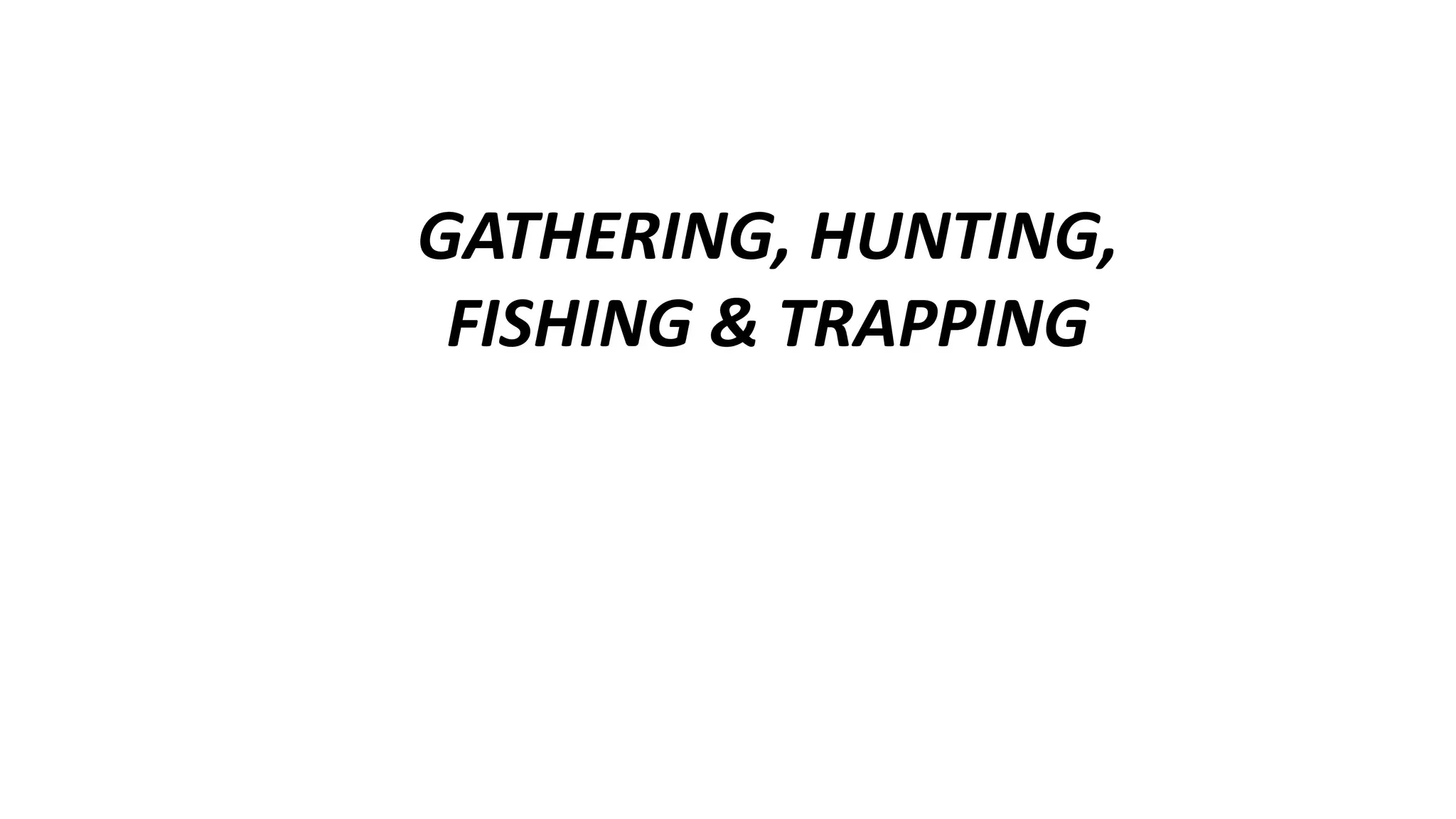





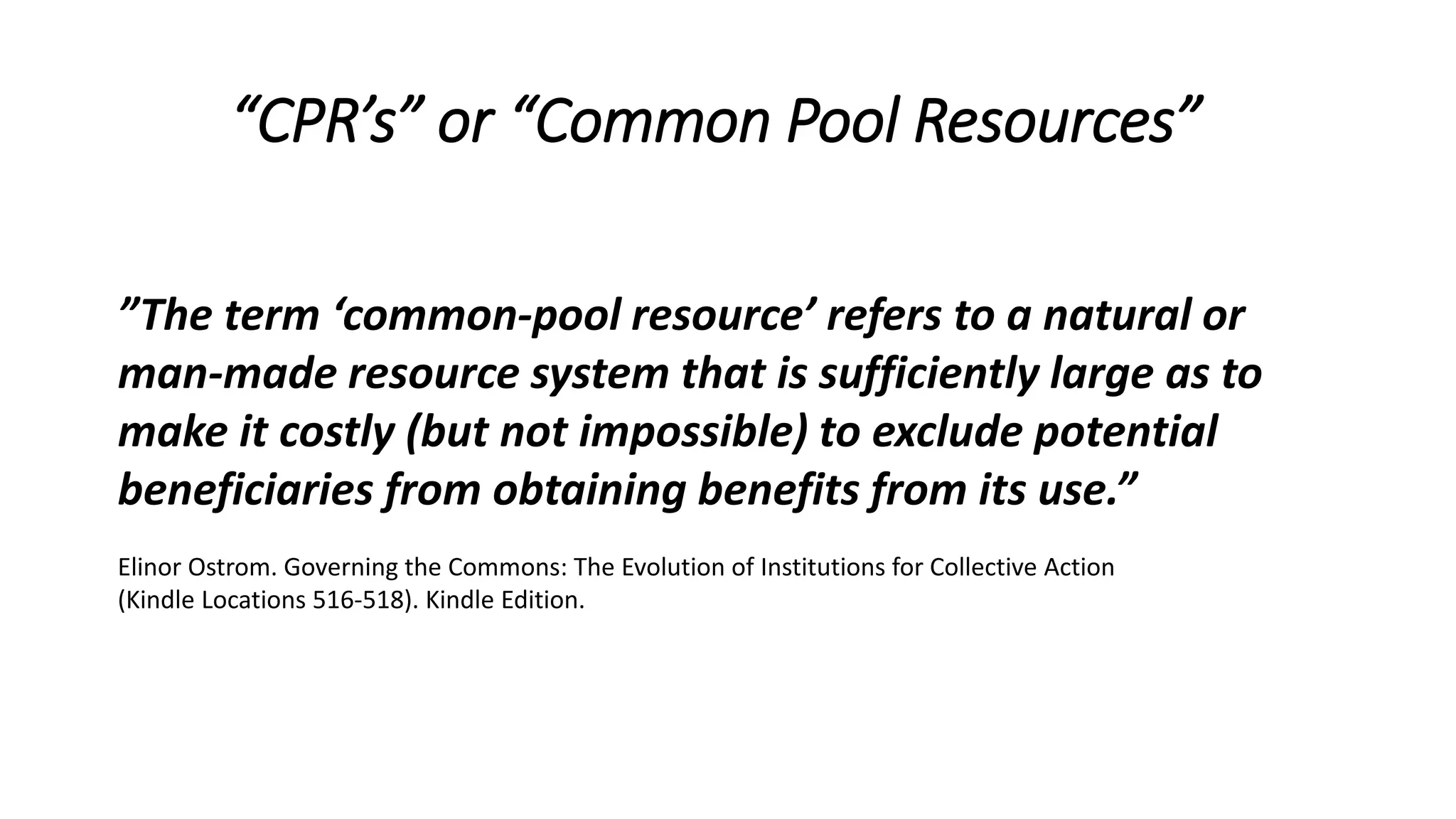




![“Appropriation” and “Appropriators”
”….the process of withdrawing resource units from a resource system [is called]
"appropriation." Those who withdraw such units are called "appropriators.” One
term - "appropriator" - can thus be used to refer to herders, fishers, irrigators,
commuters, and anyone else who appropriates resource units from some type of
resource system. In many instances appropriators use or consume the resource
units they withdraw (e.g., where fishers harvest primarily for consumption).
Appropriators also use resource units as inputs into production processes (e.g.,
irrigators apply water to their fields to produce rice). In other instances, the
appropriators immediately transfer ownership of resource units to others, who are
then the users of the resource units (e.g., fishers who sell their catch as soon as
possible after arrival at a port).”
Elinor Ostrom. Governing the Commons: The Evolution of Institutions for Collective Action
(Kindle Locations 527-529). Kindle Edition.](https://image.slidesharecdn.com/thecommons-201203200647/75/The-commons-70-2048.jpg)
